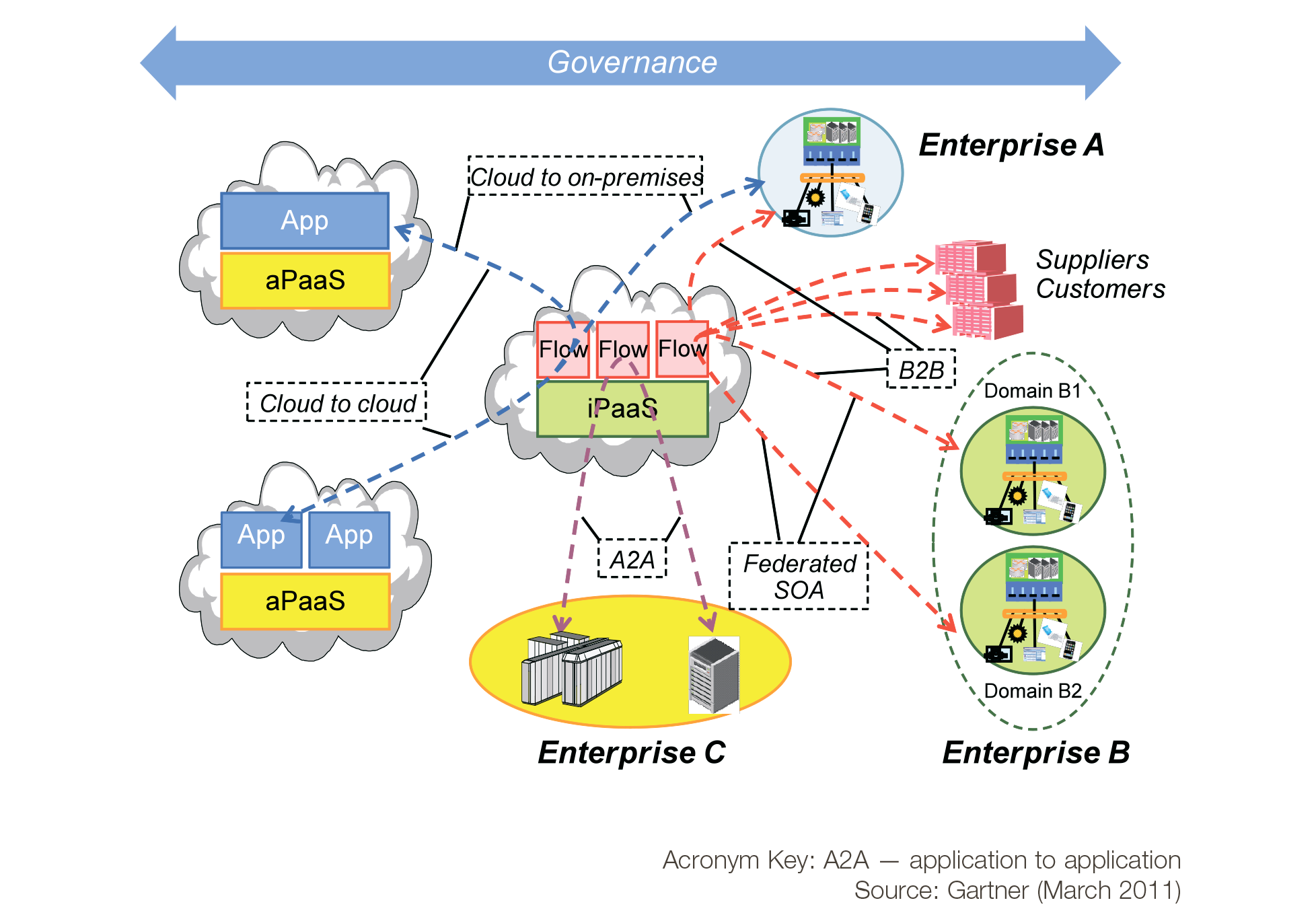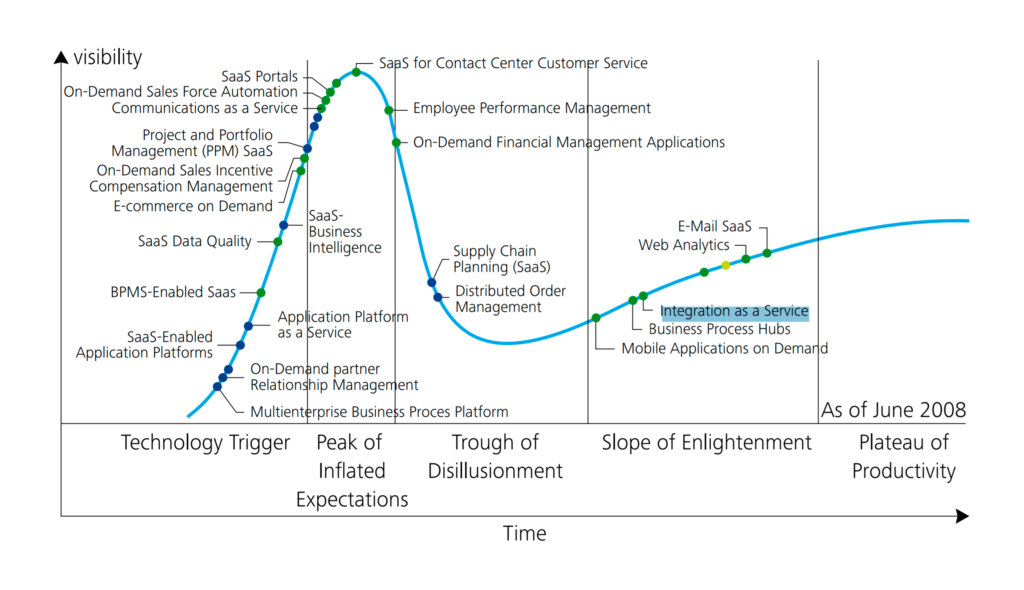iPaaS: a New Trend in Data Integration?

The cloud changes the landscape
iPaaS (integration platform as a service) is a development environment for building integration solutions. It provides a set of capabilities for data integration and application integration in the cloud and on premises.
Though Gartner recognizes and uses the term, it still sounds confusing to researchers and data integration experts. There are very few vendors offering iPaaS solutions at the moment; however, Gartner estimates the the size of the “precursor” integration-as-a-service market as “approximately $945 million in revenue in 2009.”
Sure, many companies still consider data integration in the cloud a frightening concept. The reason is that businesses feel insecure when giving up a bit of control over their information to services that are remotely hosted. At the same time, there are irresistible driving forces behind cloud computing that make me think it is here to stay.
- Self-provisioning. You can rapidly utilize a data integration engine—faster than it takes to install and configure on-premises software.
- Scalability. Cloud solutions can be scaled up or scaled down in accordance with your business needs. Traditional products limit scalability to the capacity of their platforms, while a cloud model allows additional instances to be allocated or decommissioned anytime.
- Self-healing. As the core engine resides on a centralized platform in the cloud, updates and fixes are made without additional costs and downtimes.
Still, it looks like the movement to the cloud will be more evolutionary than revolutionary.
 Gartner Hype Cycle for Software as a Service, June 2008 (image credit)
Gartner Hype Cycle for Software as a Service, June 2008 (image credit)
Platform as a service
So, how does iPaaS work? An integration platform delivers a combination of data integration, governance, security, and other capabilities to bind applications, SOA, and cloud services. In addition to basic features that a cloud solution should have, such as multi-tenancy, elasticity, and reliability, there are other capabilities relevant for iPaaS. Here’s how Ross Mason of MuleSoft describes them:
- 1. Intermediation, the ability to integrate applications and services using the cloud scenarios, which include SaaS and cloud services, on-premises apps and resources.
2. Orchestration between services, which requires connectivity and the ability to map data.
3. Service containers to enable users publish their own services using either RESTful or SOAP technologies.
4. Security covers the ability to authenticate and authorize access to any resource on the platform, as well as to manage this access.
5. Enterprise data gateway installed on premises and used as a proxy to access enterprise resources.
As of today, iPaaS would mostly appeal to companies that don’t mind hand-coding their own IT solutions or to ISVs that need to integrate cloud silos they have created previously. It will be interesting to see whether iPaaS will become the next trend in data integration.
Gartner predicts that “by 2016, at least 35% of all large and midsize organizations worldwide will be using one or more iPaaS offerings in some form.” The research firm expects that for many companies “iPaaS will be the first approach to PaaS.”
Data as a service
In addition, there’s another relevant approach one may find in iPaaS. Organizations today are expanding their usage of information as a service (also called data services) to support new business requirements, such as real-time data integration, creating data domains, improving security, integration with unstructured data and external sources.
Why work with data services? First of all, they help to bring in data from additional sources. This provides a better presentation of the important information for decision-making (and more precise one), bringing a return on investment in a shorter period time, compared to using data from a single, internal warehouse.
Second, data services are the way to liberate the information from specific applications and silos. Some data integration solutions can turn your data into services, which can then be called upon by different applications, portals, and even mobile devices. Data services make your information more widely available, as you can reach it from anywhere, anytime.
Today, many data integration products are built to serve “slow data warehouses.” With the breakdown of these warehouses, you no longer have access to the data locked up in back-end databases. In stead, for an end user, applications in the cloud are interchanging data much more easily. This efficiency means that the closest future of data integration is now closely tied to the development of the data services approach.
Further reading
- Solving Data Integration Issues when Moving to the Cloud
- No to SaaS? Dismissing the Fear of On-demand
- Building a Bridge Between Salesforce CRM and QuickBooks








